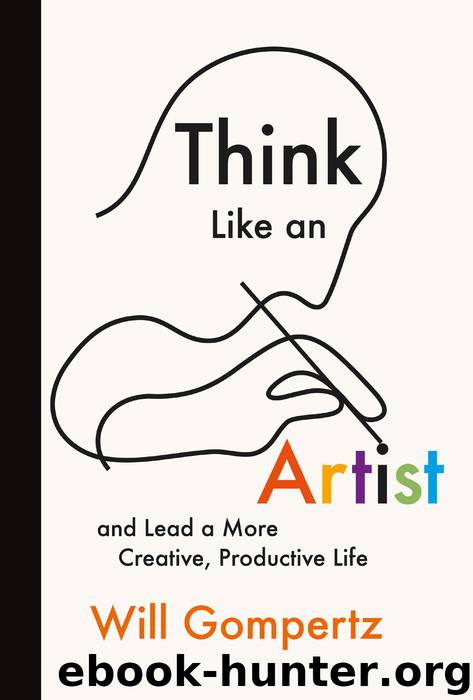Think Like an Artist by Will Gompertz

Author:Will Gompertz
Language: eng
Format: epub
Publisher: Abrams
Published: 2016-02-02T16:00:00+00:00
And there was plenty to consider, not least how to paint people. In medieval art paintings tended to present flat images, letting artists off the hook when it came to depicting volume. But the illusionistic requirements of mathematical perspective meant an artist had to find a way of modeling a person or object in a manner that suggested depth and mass. If he failed, his whole architectural environment would be hopelessly undermined. It is at this point that Piero’s genius moves from mathematical mastery to painterly prowess.
After months of speculating, experimenting, making mistakes and reflecting, he found his answer to this fundamental question. It came in the form of two simple five-letter words: light and shade. With the judicious use of both, he discovered he could represent volume authentically. Look at the man standing in the middle of the three figures positioned to the right and in the foreground of the Flagellation of Christ. Piero has used highlights and deep shading with such finesse to credibly suggest that the red tunic is covering a three-dimensional figure. He has then emphasized the effect by wrapping the garment around the contours of the man’s body, giving us a sense of bulk that is entirely convincing.
It was a promising start, but it only partially solved the problem. There was more work to do. For instance, how could he seamlessly blend his newly volumetric figures into his modern three-dimensional landscape? Brunelleschi’s linear perspective worked when it came to portraying a sense of space between people, as can be seen by the relationship in size between the three figures in the foreground and Christ and his tormentors. But it didn’t help when it came to blending them all together.
The solution came to Piero with a neat piece of counter-intuitive thinking. True to Socrates, he rejected the impulse to assume, and instead challenged his own assumptions. If light and shade was the answer to creating a sense of volume, then might it also be the way to do the opposite, to present empty space?
“So vast is art, so narrow human wit.” Alexander Pope
Look again at the Flagellation of Christ and you can see how he has used light and shade to create a sense of depth. It is particularly obvious to the right of the picture, where the three figures stand in the foreground. The light source is high above their heads, just to the left, as revealed by their shadows. Behind them the roof of the open portico throws a shadow on to the red-tiled pavement of the piazza. Beyond the portico’s shadow a light is once again visible, suggesting that there is no building immediately behind it. But our eyes’ journey into the distance is not finished. We then reach a two-story building with horizontal black inlays that has an accompanying shadow to its right. Only then do we arrive at the back wall, behind which, in the middle distance, is a tree. The light from the bright sky radiating behind it conveys the impression of open countryside beyond, completing the optical illusion.
Download
This site does not store any files on its server. We only index and link to content provided by other sites. Please contact the content providers to delete copyright contents if any and email us, we'll remove relevant links or contents immediately.
The Art of Boudoir Photography: How to Create Stunning Photographs of Women by Christa Meola(18582)
Red Sparrow by Jason Matthews(5428)
Harry Potter 02 & The Chamber Of Secrets (Illustrated) by J.K. Rowling(3646)
In a Sunburned Country by Bill Bryson(3509)
Drawing Cutting Edge Anatomy by Christopher Hart(3486)
Figure Drawing for Artists by Steve Huston(3410)
Harry Potter and the Prisoner of Azkaban (Book 3) by J. K. Rowling(3325)
The Daily Stoic by Holiday Ryan & Hanselman Stephen(3266)
Japanese Design by Patricia J. Graham(3139)
The Roots of Romanticism (Second Edition) by Berlin Isaiah Hardy Henry Gray John(2888)
Make Comics Like the Pros by Greg Pak(2883)
Stacked Decks by The Rotenberg Collection(2844)
Draw-A-Saurus by James Silvani(2689)
Harry Potter and the Deathly Hallows (7) by J.K. Rowling(2682)
Tattoo Art by Doralba Picerno(2627)
On Photography by Susan Sontag(2608)
Churchill by Paul Johnson(2544)
The Daily Stoic by Ryan Holiday & Stephen Hanselman(2528)
Drawing and Painting Birds by Tim Wootton(2475)
